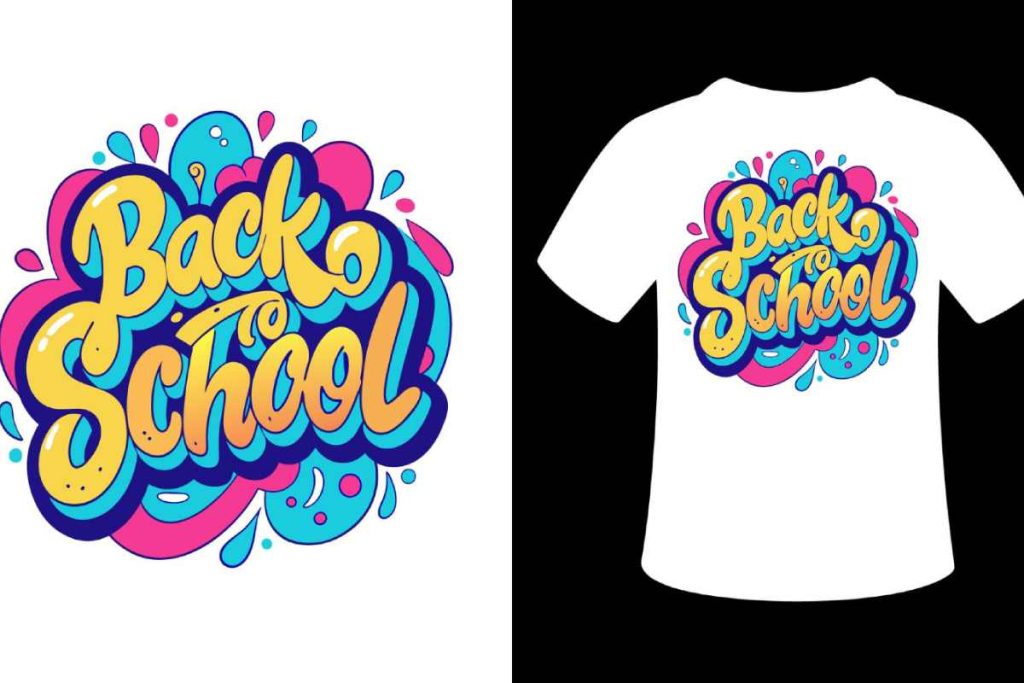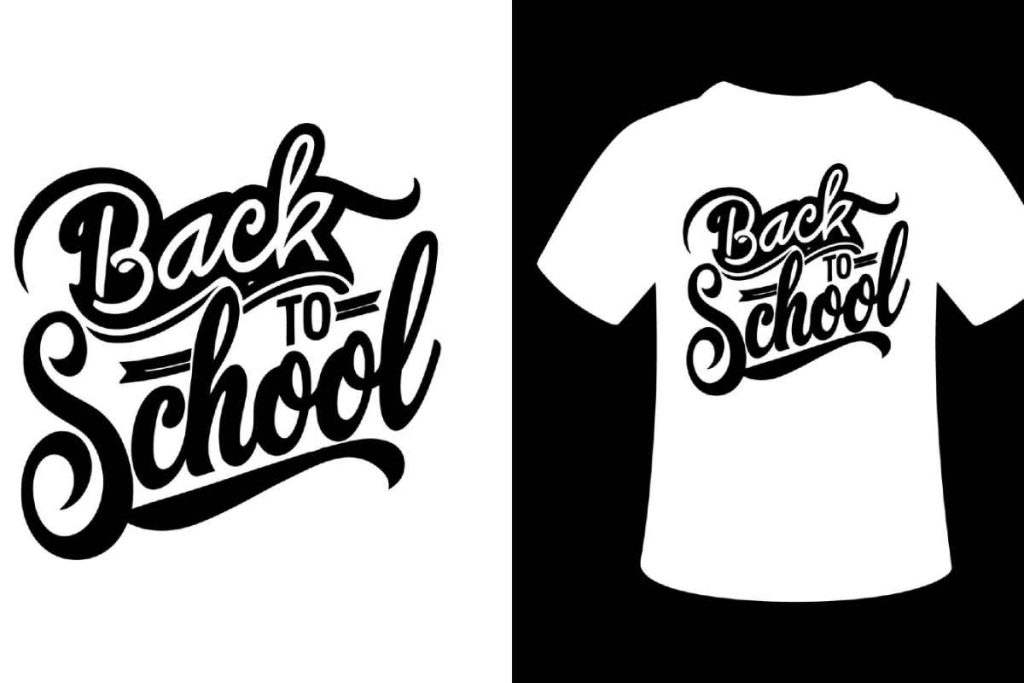DTF transfers, or Direct-to-Film transfers, have emerged as a revolutionary force in the realm of fashion printing, establishing a new benchmark for producing custom apparel. This innovative printing technology offers remarkable versatility, allowing intricate designs to be transferred onto a variety of fabrics with ease. As sustainability becomes increasingly vital in the fashion industry, DTF printing stands out with its eco-friendly practices, minimizing waste and utilizing sustainable printing technology. The rich colors and high-quality outputs produced by DTF transfers amplify their appeal to designers and consumers alike, making them the go-to choice for personalized fashion statements. In this article, we will delve deeper into the landscape of DTF technology and its impact on the future of fashion printing.
In the ever-evolving world of custom printing, direct-to-film solutions have captured the attention of many within the apparel industry. This cutting-edge printing technology not only enhances the quality of the artwork but also streamlines the overall process of design transfer onto fabric. With an emphasis on eco-conscious production methods and customization, direct-to-film printing is redefining the standards for modern fashion. As brands seek ways to stand out in a crowded marketplace, the adoption of such innovative technologies is becoming paramount. Join us as we explore how these advanced printing techniques are shaping the future of personal expression in fashion garments.
Understanding DTF Transfers in Fashion Printing
Direct-to-Film (DTF) transfers represent a significant evolution in the fashion printing industry. Unlike traditional printing methods, DTF allows for a more intricate and vibrant design, printed directly onto a special film before being transferred to the fabric. This innovative approach has gained popularity due to its ability to produce high-quality outputs with minimal setup, making it ideal for custom apparel and small-scale productions. The precision involved in DTF printing ensures that every detail is captured, from the finest lines to the richest colors, redefining what is possible in garment decoration.
Utilizing DTF transfers means that designers and brands can embrace creativity without the common constraints of traditional printing options. With its flexibility, DTF caters to a wide range of materials including cotton, polyester, and blends. This versatility not only facilitates the creation of customized products but also allows brands to quickly adapt to fashion trends and consumer demands. Moreover, as sustainability becomes increasingly important in consumer choices, DTF’s on-demand printing capabilities significantly reduce waste, setting a new standard in the realm of eco-friendly fashion printing.
Recent Technological Advances in DTF Printing
The technological advancements in DTF printing are accelerating the shift towards digital fabric printing in the fashion industry. Recent innovations focus on improving ink composition and printer technologies, which enhance color fidelity and speed. These advancements allow brands to maintain consistency in their products while also catering to the growing desire for personalized apparel. The development of printers that can handle various substrates has expanded the scope and potential of DTF, making it an essential tool for businesses aiming to keep pace with the fast-moving market.
Additionally, enhancements in techniques for ink adhesion create new possibilities for DTF applications across diverse fabrics. These changes signify a shift towards higher quality prints that meet consumer expectations. Brands can now offer designs that not only look great but also stand up to the test of time, providing durability without compromising on aesthetic appeal. As technology evolves, DTF printing is set to solidify its place as a dominant force in the world of fashion printing, particularly for custom apparel.
Sustainability in Fashion Printing: The Role of DTF
Sustainability in the fashion industry has become a crucial discussion point, with brands seeking ways to minimize their environmental footprint. DTF transfers offer a promising approach by enabling on-demand printing, which leads to significant reductions in waste compared to traditional screen printing methods. This process allows brands to produce only what’s needed, thereby conserving resources and reducing excess inventory—a common pitfall in fast fashion.
Moreover, DTF printing often employs eco-friendly inks and recyclable films, which contribute to a more sustainable production cycle. As consumers increasingly prioritize brands that demonstrate a commitment to environmental stewardship, adopting such sustainable printing technologies can provide companies with a competitive edge in the market. Transitioning to DTF transfers not only aligns with global sustainability goals but also appeals to eco-conscious consumers who are more inclined to support brands that prioritize responsible production practices.
Market Growth and Trends in Custom Apparel
The custom apparel market is witnessing unprecedented growth, particularly driven by the rise of individual expression and personalized fashion. As per industry reports, the digital textile printing market, of which DTF is a vital component, is expected to reach approximately $3 billion by 2026. Businesses that utilize DTF technology are well-positioned to capitalize on this trend, offering unique designs that cater to both niche markets and mainstream audiences.
This growth highlights a shift in consumer preferences towards bespoke fashion items, encouraging brands to innovate continually. The ability of DTF to produce high-quality, customizable prints on a variety of fabrics enables brands to launch limited-edition collections targeted at specific consumer segments. Fast production capabilities also allow for rapid response to market demands and trends, empowering businesses to keep their offerings fresh and appealing.
Challenges in Adopting DTF Technology
While DTF printing presents numerous advantages, the technology also comes with distinct challenges that businesses must navigate. One significant hurdle is the need for specialized knowledge and training to operate DTF printers effectively. Unlike traditional printing methods that may rely on manual skills, DTF requires an understanding of both the artistic design elements and the technical aspects of the printing process. This learning curve can deter some businesses from fully adopting the technology at the outset.
Additionally, the cost of high-quality inks and specialized films used in DTF printing can be a barrier, particularly for startups and smaller enterprises. Establishing a DTF printing operation can involve substantial upfront investment in equipment and materials. However, the long-term benefits of reduced waste and increased customization capabilities often outweigh these initial costs, making it a viable option for businesses willing to invest in their future.
Comparing DTF with Other Printing Technologies
DTF printing stands out in the competitive landscape of fabric printing technologies, particularly when compared to methods such as Direct-to-Garment (DTG) and traditional screen printing. While DTG is renowned for its ability to produce vibrant colors and intricate designs, it often wrestles with limitations regarding certain materials and large production volumes. Conversely, screen printing, though effective for bulk orders, tends to involve higher costs and time-consuming setup processes—making it less feasible for custom, small-batch designs.
DTF positions itself as an appealing alternative, offering the best of both worlds. It combines the vibrancy and detail found in DTG with the efficiency of a setup similar to screen printing, providing manufacturers and designers with a versatile solution that adapts well to the demands of modern fashion. In a marketplace increasingly driven by customization, DTF provides a balance of quality, speed, and sustainability, making it a crucial player in the future of fashion printing.
Frequently Asked Questions
What are DTF transfers in fashion printing?
DTF transfers, or Direct-to-Film transfers, are a contemporary fashion printing technology that involves printing designs on a special film which is then transferred onto fabric using heat and pressure. This method allows for vivid colors and intricate details, making it ideal for creating high-quality custom apparel.
How does DTF printing differ from traditional printing technologies?
Unlike traditional methods like screen printing, DTF printing offers greater flexibility and efficiency. It enables on-demand production of custom designs without high setup costs, making it suitable for both small businesses and large manufacturers. Additionally, it provides superior color fidelity and can be used on various materials.
What are the sustainability benefits of using DTF transfers?
DTF transfers contribute to sustainable printing technology by reducing material waste through on-demand production. This approach minimizes overproduction common in traditional screen printing. Furthermore, many DTF printers use eco-friendly inks and recyclable films, aligning with the industry’s shift towards greener practices.
Can DTF printing be utilized for different types of fabrics?
Yes, DTF printing is compatible with various fabrics, including cotton, polyester, and fabric blends. Its versatility allows manufacturers to explore different materials while maintaining high-quality prints, making it a popular choice in the custom apparel sector.
What challenges might businesses face when adopting DTF printing technology?
While DTF printing presents numerous advantages, businesses may face challenges such as the learning curve associated with printer settings for optimal results. Additionally, the initial costs for high-quality inks and films can be significant, posing barriers for newcomers in the fashion printing landscape.
How does the market for DTF transfers compare to other printing technologies?
The market for DTF transfers is rapidly growing, as it offers a competent alternative to technologies like Direct-to-Garment (DTG) and screen printing. DTF provides a good balance of quality and versatility without the high setup costs prevalent in other methods, positioning it favorably in the custom apparel market.
| Key Aspects | Details |
|---|---|
| Introduction | DTF transfers are revolutionizing custom apparel with high quality and sustainability. |
| Overview | Involves printing on a special film, transferring designs to fabric using heat. Suitable for various materials. |
| Technological Advancements | Improved color fidelity and production speed, along with better ink adhesion. |
| Sustainability Initiatives | Reduces material waste; eco-friendly inks and recyclable films are becoming commonplace. |
| Market Growth | Projected to reach $3 billion by 2026, with high demand for custom apparel. |
| Challenges | Requires technical training and can have high ink costs. |
| Market Position | Versatile alternative to DTG and screen printing, with lower setup costs. |
Summary
DTF transfers are revolutionizing the fashion printing industry by offering a sustainable, cost-effective solution for custom apparel production. This innovative technology not only caters to a growing market demand for personalized and sustainable fashion but also streamlines production processes with its efficiency and adaptability to various fabrics. As more businesses embrace DTF printing, it is clear that this method is setting a new standard in garment creation, making it an essential topic for anyone interested in the future of the fashion industry.



